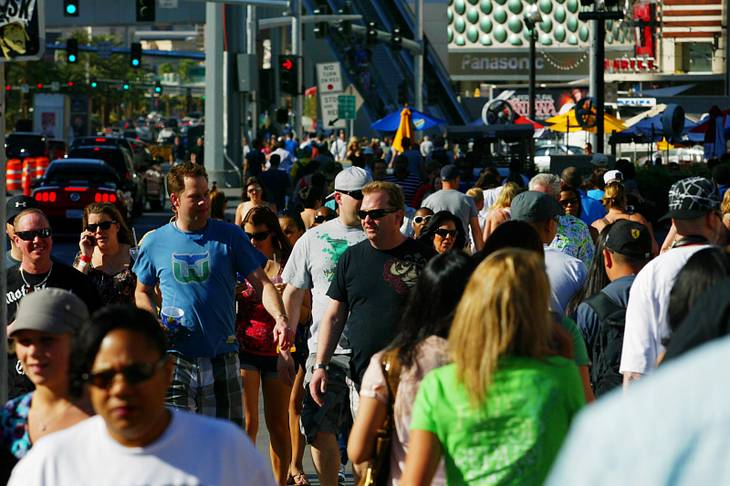Sun coverage
After 22 straight months of increases in visitor volume percentage in Southern Nevada, the Las Vegas Convention and Visitors Authority is finally seeing the payoff — an $18.8 million increase in its budget.
Next month, the LVCVA board of directors will consider a recommendation approved Tuesday by its audit committee to increase the authority’s general fund budget for fiscal 2012 by $18.8 million, including $7 million dedicated to its capital project funds budget.
The budget augmentation recommendation came after the board received a final visitor volume report for 2011 that showed percentage increases in almost every tourism category.
Kevin Bagger, the LVCVA’s senior director of marketing, told the board that for the year, there were percentage increases in visitor volume, citywide occupancy, average daily room rates, convention attendance, passenger volume at McCarran International Airport and Clark County gaming revenue.
Only one tourism indicator showed a decline — average daily highway traffic volume, which showed a 0.5 percent drop to 99,844 vehicles a day.
The steady increase in visitor numbers led the LVCVA to predict that Las Vegas would have a record 40 million tourists in 2012.
“I think these numbers show we’re back,” Bagger told the board.
With visitor volume, occupancy and room rates up, the LVCVA has revised its revenue projection from room tax receipts from $218.5 million to $245.3 million for the general fund, pushing $10 million to capital project funds and boosting the total to $14.5 million.
Because the board’s financial leaders like to be conservative, the augmented budget would have $18.8 million in expenditures in the general fund despite anticipated revenue of $27 million.
In the resolution approved by the audit committee that will be considered March 13 by the LVCVA board, the agency plans to transfer $10 million to the capital fund and spend an additional $5 million for advertising, $2.7 million for community support, which includes money for local schools and roads, $950,000 for marketing and $106,000 for general government expenditures.
Bagger’s report listed 2011’s average daily room at $105 a night, $19 less than the average for the top 25 U.S. markets. Among Las Vegas’ key competitors, New York’s average rate was $244, the Hawaiian island of Oahu was $165, San Francisco was $155, Miami was $153, Los Angeles-Long Beach was $123, Chicago was $118 and Orlando was $94.
Las Vegas’ 2011 occupancy rate of 83.8 percent — which was 3.4 percentage points higher than in 2010 — was 23.7 percentage points higher than the national average of 60.1 percent.
Las Vegas was the national leader in that category, ahead of New York at 81.2 percent, Oahu at 80.9, San Francisco at 79, Miami at 75.6, Los Angeles at 71.7, Orlando at 67.6 and Chicago at 64.2.
